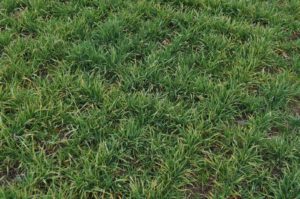
UK, USDA Researchers Live by the Word ‘Collaboration’
Together the groups have studied fescue toxicosis, equine gut health, and other horse health and management aspects.

Together the groups have studied fescue toxicosis, equine gut health, and other horse health and management aspects.

Large crabgrass is very palatable to horses and has a high nutrient content, making it useful for grazing in the south.

Gellin is studying the epidemiology of leptospirosis in Central Kentucky and horses’ immune response to the disease.

For cool-season pastures, fall is the ideal time to overseed to thicken a stand and fill in bare areas.
Tim Phillips, PhD, developed a new tall fescue variety that is nontoxic to grazing animals, including horses.

Tall fescue is a very hardy forage able to withstand high summer temperatures, drought, moisture stress, and shade.

The Parasight System is a smartphone-based fecal egg diagnostic and intestinal parasite management tool for vets.

Goedde studied whether an omega-3 DHA supplement affected a stallion’s sperm motion characteristics and viability.
Events include the John F. Timoney Symposium, Equine Research Hall of Fame event, and Reproductive Diseases Symposium.
The USDA has issued revised guidelines for contagious equine metritis (CEM) culture. Here’s what you need to know.

UK entomologists have captured Asian tiger mosquitoes, a possible carrier for the Zika virus, in Central Kentucky.

Rye straw can contain ergot alkaloids, which can be poisonous to livestock, including horses. Here’s what to watch for.
Ashley Steuer, DVM, will carry out a dual residency and PhD program in veterinary parasitology.
Lear was an equine genetics researcher and associate professor at the UK Gluck Equine Research Center. She died May 14.

Elzinga hopes to gain a better understanding of mechanisms that could predispose a horse to developing laminitis.

The Bluegrass Equine Digest and other publications and campaigns garnered top awards.
Stay on top of the most recent Horse Health news with